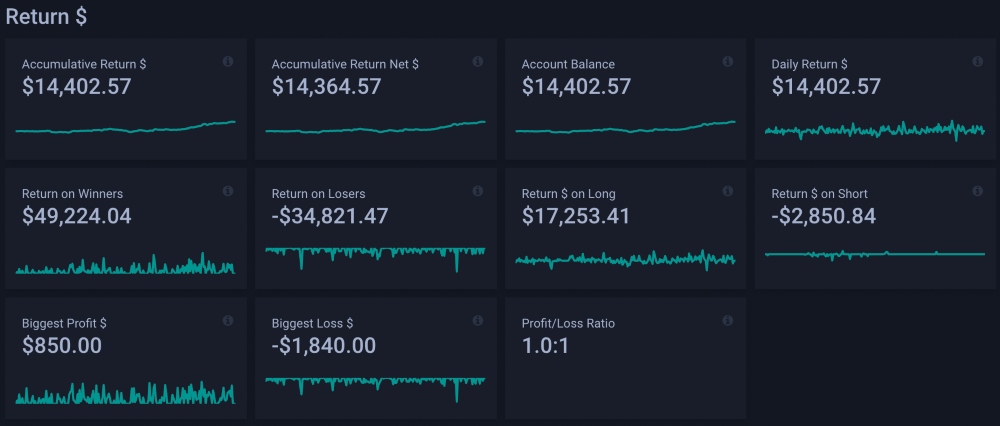

James is an investment writer with a background in financial services. As a former management consultant, he has worked on major operational transformation programmes at prominent European banks. James authors, edits and fact-checks content for a series of investing websites.
Jemma Grist
Jemma is a writer, editor and fact-checker focused on retail trading and investing. Jemma brings a unique perspective to the forex, stock, and cryptocurrency markets and works across several investment websites as a researcher and broker analyst.
Fact Checked By William Berg
William contributes to several investment websites, leveraging his experience as a consultant for IPOs in the Nordic market and background providing localization for forex trading software. William has worked as a writer and fact-checker for a long row of financial publications.
Jun 13, 2024Trading journals are important tools that all day traders, aspiring or experienced, can use to keep track of their trades, yet many investors are unaware of them. As a cheap or free way to help organize trading activity, journals help traders to notice patterns and provide a clear structure through which they can make targeted improvements. So whether you are speculating on cryptos, stocks, futures, options, commodities, or forex, a trading journal can help you document your progress and improve your trading performance.
This guide explains how trading journals work, including their advantages and disadvantages. We also run through what to include in an online trading journal and list the best trading journals in 2024.
TradeMetria is a trading journal with reports that track 30+ metrics. The journaling software is partnered with 140+ brokers for straightforward imports.
TradeMetria is a trading journal with reports that track 30+ metrics. The journaling software is partnered with 140+ brokers for straightforward imports.
TraderVue offer journaling software with auto imports and 80+ supported brokers and platforms. TraderVue offer journaling software with auto imports and 80+ supported brokers and platforms.TraderSync is an online trading journal that offers in-depth performance reports, AI-powered feedback, and a simulator. The auto sync function also removes the manual effort of capturing trade information.
TraderSync is an online trading journal that offers in-depth performance reports, AI-powered feedback, and a simulator. The auto sync function also removes the manual effort of capturing trade information.
Edgewonk is a digital trading journal that integrates with established platforms and brokers. Record your trades, review the results, and make improvements.
Edgewonk is a digital trading journal that integrates with established platforms and brokers. Record your trades, review the results, and make improvements.

Swift Journal is a fully automated forex trading journal that syncs with the popular MetaTrader 4 and MetaTrader 5 platforms. Users get real-time insights into their trading performance via a beginner-friendly dashboard. Swift Journal is also compatible with hundreds of popular brokers and offers three subscriptions plans to suit different budgets.
Swift Journal is a fully automated forex trading journal that syncs with the popular MetaTrader 4 and MetaTrader 5 platforms. Users get real-time insights into their trading performance via a beginner-friendly dashboard. Swift Journal is also compatible with hundreds of popular brokers and offers three subscriptions plans to suit different budgets.
There are few arguments against using trading journals, even if it only records the simplest and most basic information about your trades. A journal’s benefits are wide-ranging but can be generally summarized in two categories:
Trading journals should be used to log any quantitative information that is relevant to any trade you carry out, detailing the setup before the trade, the numbers during the trade, and the key details of how the trade concludes. You can also include a qualitative analysis of your feelings about the trade, and how you went about it.
When used correctly, a good trading journal should leave you with a broad database of information to analyze and draw conclusions from about your trading performance.
When organized in a straightforward spreadsheet, this information may look something like this:

In addition, you may find it helpful to take screenshots of the price charts at the points of your entry and exit – this will help you analyze market patterns when reviewing your trading journal.
After the trade finishes and you have entered all the quantitative details that you need, this is a good time to note down your feelings in trading journals. Write down what went well, what maybe didn’t go so well, and how you felt throughout the trade. Add straightforward descriptions and definitions, for example, “revenge trade”.
This is an opportunity to evaluate the intangible emotional factors that can influence how a trade turns out. Did you get distracted and miss the ideal point to close a trade? Or, did you get nervous and exit a position too early? Perhaps you were rage trading.
These factors are not easily quantifiable, but they are important in understanding your behavioral characteristics while trading – for example, if your risk aversion is missing you opportunities, or, on the other hand, if you’re taking losses from too many risks.
Over time you will produce a detailed database of your trading behaviors, allowing you to develop strategies to increase your profitability or to curb behavior that is costing you money.
Creating a trading journal is easy, and there are plenty of free and easily accessible software programs that you can use to construct a database, or calendar, of your trading history. All you need is the ability to create tables to input data, to write some text describing your feelings towards a trade, and, if you so desire, the ability to insert any screenshots of market charts you feel will help your analysis.
One of the most convenient innovations for traders is app software that plugs into your trading platform and automatically creates an interactive trading journal for a reasonable subscription fee. These tools also offer intuitive charts, feedback and tips to help you improve.
The top trading journals and notebooks with charts include:

Traders can also make use of the following well-known programs, some of which are available as free downloads:
Some of these examples are also available in app form, making them easy to access when trading on the go.
Trading journals provide you with a legal, structured way to record your investing activity, allowing you to look back and analyze what worked and what didn’t, and improve your trading performance going forward. As such, traders from all countries, be it the UK or the US, India or the Philippines, should consider keeping a journal or diary to improve their trading skills.
New apps such as Edgewonk and TraderSync make keeping a trading journal straightforward since they will automatically record all of the relevant quantitative information as you trade. They also bring technological innovations that help you analyze the recorded data and execute new trades. As a result, they top our ranking of the best online trading journals in 2024.
However, if you prefer to keep a journal of your own without paying for new software, you can use Excel, Google Sheets, or many other common applications.
At the bare minimum, a trading journal should include the profit and loss made on each trade, along with the date and time the trade was made. However, the more you put into a trading journal, the more you will get out of it, so it is best to include as detailed an account of your trades as possible.
Logging emotional factors, such as what motivated you to trade can also prove useful. Head to our detailed trading journal guide for more questions and answers on what to capture.
No – you don’t have to use a trading journal. However, if you are serious about making money through trading online then it is a no-brainer. The advantages are numerous, and the only real drawback is the time you will need to spend organizing your journal.
But importantly, this will be time well-spent and should have a positive impact on your trading efficiency and effectiveness. And, if you prefer not to spend time taking notes, you can find interactive brokers with automated journaling or pay for apps and websites that provides this service.
Many programs can be used to create a trading journal, from classic spreadsheet software like Excel and Word to sophisticated paid applications. Some brokers offer an inbuilt journal template, and this will save you time by automatically recording the data needed.
Apps like Edgewonk and TraderSync also automatically record your trading data, as well as offering useful analysis and training features.
While a trading journal is a good way to make your investing activity more organized and efficient, there is no guarantee that it will make your trading more profitable. There is always a risk with trading that you may lose money, so a good strategy is required if you hope to make a profit consistently.
The best way to develop a good strategy is to use a trading journal to notice patterns in your trading, allowing you to make refinements and improvements.
A trading journal is useful to any trader, no matter what timeframe they are trading in, be it day trading or swing trading. However, for high-frequency trading over a very short period, you may want to streamline the amount of data you record for each trade to save time, as inputting stats for all the trades you make could be time-consuming.
In this case, an automated workbook or logbook that you can use to view and share trading details will be useful. Our guide reviews and ranks the best digital trading journals for stocks, forex, cryptos, options and commodities.
Trading journals can record quantitative data, such as entry and exit points, risk management parameters, plus profit and loss. However, the top digital trading journals and apps also allow you to capture your emotions at the time and share insights into how they might impact your results, for example, if you are rage or revenge trading.